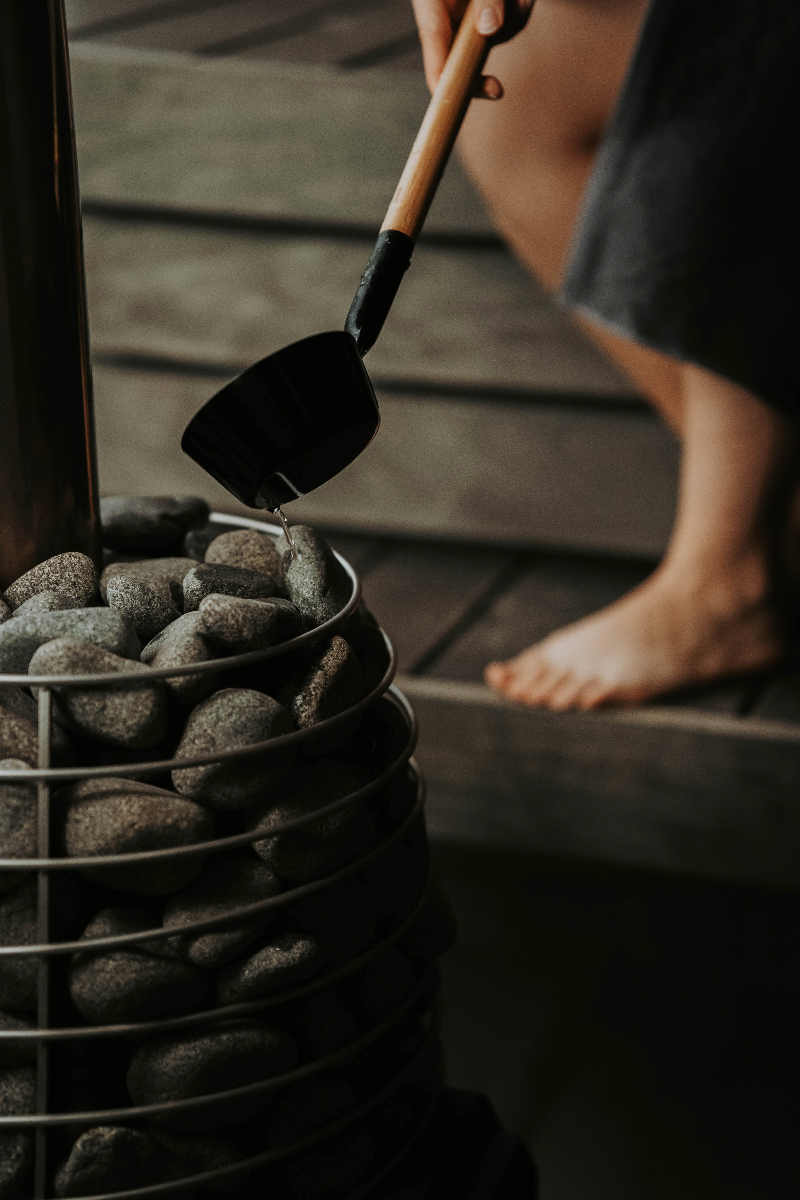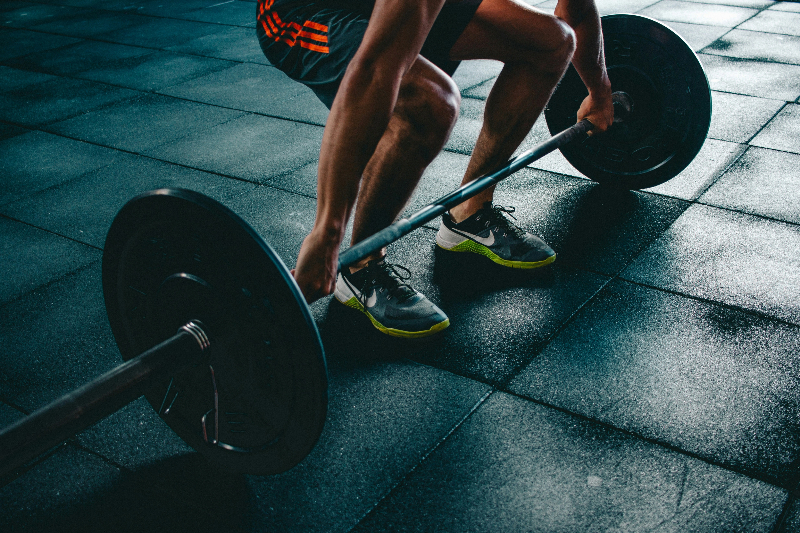In the realm of health and wellness, few practices embody the principle of “no pain, no gain” quite like the revival of ice baths. Plunging into icy water might seem like a counterintuitive pursuit—a stark departure from the comforts of warm showers—but it’s precisely this discomfort that has drawn enthusiasts around the world.
There are many practices humans are drawn to—fasting, meditation, saunas, even exercise—that are painful, uncomfortable and unenjoyable in the moment but that people partake in. The question is, why? What do these things offer that make enduring the discomfort worthwhile?
If you’re reading this, you likely live in a society where pleasure is always at your fingertips. You and I can access food, medication, shopping, social media, music, alcohol, pornography, gaming, movies and more whenever we want to. Yet still, we are never quite satisfied with what we have. Not only has this affected our overall mood, but it has also led many of us to have relationships with things we know aren’t good for us but that we can’t stop reaching for.
Even in a time of wealth, freedom, technological progress and medical advancement, people are more depressed, anxious and addicted than they were a few decades ago. Despite increased funding allocated to medications like antidepressants across high-resourced countries, including Australia and the US, the prevalence of mood and anxiety symptoms in these regions has only increased.
Dr Anna Lembke, Stanford psychiatrist and author of Dopamine Nation: Finding Balance in the Age of Indulgence, said, “The reason we’re all so miserable may be because we’re working so hard to avoid being miserable. . . . Human beings, the ultimate seekers, have responded too well to the challenge of pursuing pleasure and avoiding pain. As a result, we’ve transformed the world from a place of scarcity to one of overwhelming abundance. The net effect is that we now need more reward to feel pleasure and less injury to feel pain.”
Lembke goes on to say that on a neurological level, we actually need to experience pleasure andpain. Before the 1900s, medical professionals believed that a certain level of pain was healthy. Doctors in the 1800s were hesitant when it came to adopting general anaesthesia for surgical procedures, as they thought pain boosted the immune and cardiovascular response and sped up the healing process.

A crash course on the brain
One of the most interesting findings in neuroscience is that pleasure and pain are co-located in the brain and work like a balance. When we do something pleasurable, the balance tips one way; when we do something painful, it tips the other. But there are rules around this balance.[1]
First, it wants to remain level, or what neuroscientists call homeostasis. It does not want to be tipped for very long to one side or another, and our brains will work hard to restore any imbalance. If I do something pleasurable, like eat a piece of chocolate or splurge on something online, the balance tips to the side of pleasure and my brain releases dopamine. When an individual chases an activity or drug that leads to a huge dopamine increase, their dopamine baseline soon after drops. What follows is the inevitable comedown, hangover or after-effect, followed by cravings of the same pleasure.1 This makes sense. We’ve experienced something good and want to experience it again.
The easy solution is to keep eating, playing, watching, reading. But the problem is that the more we consume, the more we need to get the same amount of pleasure. As Lembke explains, “With repeated exposure to the same or similar dopamine-provoking stimulus, not only will I not get the same peak, but the deviation to the side of pleasure gets weaker and shorter and the after-response to the side of pain gets stronger and longer.”
Many of us have experienced the feeling of not wanting to reach for that “thing” again but struggling to resist. We may become hyper-focused on managing our cravings and experience symptoms universal of withdrawal: anxiety, irritability, insomnia and intrusive thoughts. We think if we just go there once more, we’ll get the same peak and then be able to go on with our lives. But that’s often not what happens. In many cases, our return to using it can become, as neuroscientist George Koob says, “Driven not by the search for pleasure but the desire to alleviate physical and psychological suffering of protracted withdrawal.” Down the track, this thing might not satisfy us at all, and eventually, our pursuit of it might even leave us feeling worse than how we started.
The good news is that if we resist and allow time to pass, our dopamine levels will return to their baseline. When our baseline is level, we are much more likely to find pleasure in everyday things,such as sitting down for a nice meal, watching the sunset, seeing a friend, going for a walk or making a cup of tea.

Pain to treat pain
One branch of science accepted by psychiatrists and neuroscientists suggests that some level of pain can be good for us when grappling with addictions. This principle is known as hormesis, which comes from the Greek hormáein: to set in motion, to impel, to urge on. Hormesis examines the beneficial effects of administering small to moderate doses of painful stimuli, such as cold, heat, gravitational changes, radiation, food restriction and exercise.1
Lembke is just one psychiatrist who prescribes various forms of hormesis (including cold-water immersion) to patients struggling with addictions and withdrawals. “The body responds to cold water by up-regulating feel-good molecules like dopamine, serotonin and norepinephrine, as a way to compensate,” she said. Kenneth Kishida, another neuroscientist and dopamine researcher, likes to take rugged camping trips where he subjects himself to cold water and other hermetic stressors, as he finds he returns from these trips in higher spirits and with stronger self-control.
The history of medicine is full of examples of intentional application of pain to treat pain. These therapies were sometimes called “heroic therapies” and included cupping, blisters and moxibustion. Such therapies began to decline in the 20th century when the medical profession discovered drug therapy. However, there has recently been a resurgence of interest in using pain to treat pain.1
Modern experts suggest a few things for those experiencing drops in their dopamine levels due to addictions. The most important thing is to abstain from that thing, either cold turkey or through some sort of tapering to limit interactions. The next thing that can help is to “inhibit great pain with little pain”, as Lembke puts it.
This doesn’t mean throwing yourself against cement, cutting or exercising excessively. Instead, it means doing things that are either physically, psychologically or emotionally challenging that have a positive result. A multitude of practices, both ancient and modern, can be a catalyst for healing and growth: cold-water immersion, exercise, fasting, meditation, silence, sauna therapy, engaging in a new social interaction, facing something you’re afraid of, practicing truth-telling, confessing to someone or challenging mental pursuits like reading about a topic you don’t understand.
When we partake in activities that feel hard, we tell the body there has been an injury, and it starts to make more dopamine to speed up the return of homeostasis. The dopamine from these activities is often more enduring than that from the things we tend to think will bring us the most pleasure and don’t leave us in a dopamine deficit state.
The trend of ice baths and cold-water immersion is just one example of how temporary discomfort can yield profound benefits for the body and mind. The age-old activity has persisted across cultures and centuries, from Nordic iceplunges to Japanese onsen rituals to celebrities like Kim Kardashian and Harry Styles broadcasting their backyard baths on social media. Unsurprisingly, the practice has gone viral as it unearths a trove of benefits, including improved mood, mental alertness, enhanced circulation and boosted immune function. Regarding addiction, studies report that dunking yourself in cold water increases dopamine by 250 per cent. This is a prolonged dopamine release that remains elevated for several hours afterwards.
Exercise is another example. Even if you’re one of the rare souls who loves exercising, I’m sure you’ve had moments where you haven’t felt like doing it, or where exhaustion, increased temperature, shortness of breath or pain has tempted you to stop. Yet the evidence is overwhelming that exercise is good for us, and the absence of it is deadly. Again, not only does it profoundly affect our mood, cognition, energy and sleep, but it also reduces the likelihood of one getting addicted to something and helps those already addicted to stop or cut back.1

Daring to step out
We live in a world where we are exposed to high-dopamine stimuli all day long. Our culture encourages us to pursue it and it’s so easily accessible that we barely have to move from the couch. However, in our pursuit of pleasure, we seem to have made our pain worse.
If we want to live an enjoyable life where we can find pleasure in everyday moments, it might help if we peel ourselves away from a constant barrage of feel-good things from time to time. Studies show there are benefits to those cold-water immersions that make your skin prickle, those fasting challenges that test your willpower, and those moments of forced silence that demand mental discipline. It might sound counterintuitive and countercultural to the world of self-care to put yourself in a state of stress voluntarily, but we can all testify to pain giving way to pleasure in some form. Be it an improved mood after exercising, a clear head after a cold swim or re-energised after a period of being ill.
So, if you’re struggling to loosen your grip on an addiction—as small or severe as it might be—seeking out pain over pleasure could help. Of course, there’s much more to addiction recovery than ice baths and hill sprints, but we can always start somewhere.
As Lembke said, “Pursuing pain is harder than pursuing pleasure. It goes against our innate reflex to avoid pain and pursue pleasure. It adds to our cognitive load. We have to remember that we will feel pleasure after pain, and we’re remarkably amnestic about this sort of thing.”
Zanita Fletcher is a life coach, writer, and an assistant editor for Signs of the Times Australia/New Zealand. She writes from the Gold Coast, Queensland. A version of this article first appeared on the Signs of the Times Australia/New Zealand website and is republished with permission.



















